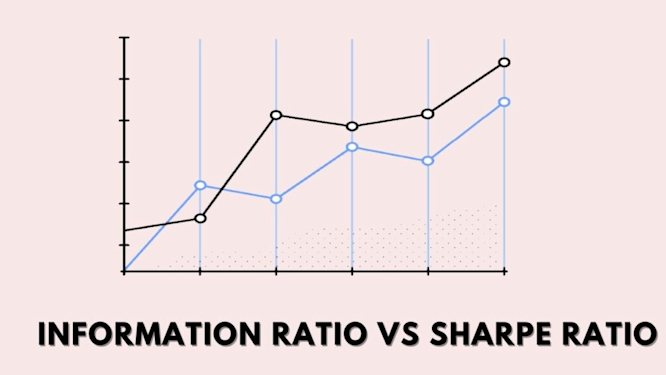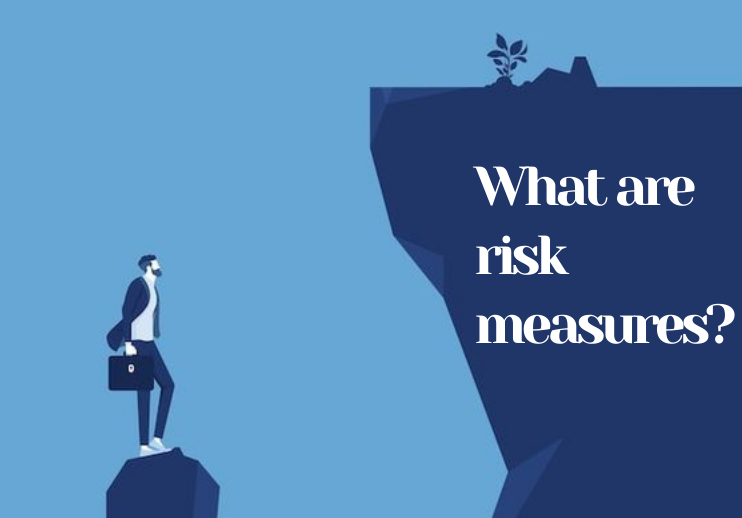Information-Ratio-Versus-Sharpe-Ratio-Which-one-is-more-important
Trading Strategies
Information Ratio
What is information ratio
The Information Ratio is a financial metric that evaluates a fund manager's ability to generate returns in comparison to a benchmark while considering the level of risk taken. It serves as an indicator of the manager's skill in making strategic investment decisions. A high Information Ratio suggests that the manager consistently outperforms the benchmark through prudent and well-informed strategies, while a low ratio may indicate a reliance on luck or the use of unnecessary risks. Investors use the Information Ratio to assess whether a fund manager adds genuine value to the investment process by achieving superior results through thoughtful decision-making rather than chance or excessive risk-taking.
Formula and Calculation of the information ratio
The Information Ratio (IR) is calculated using the following formula:
Information Ratio (IR) = Active Return \ Tracking Error
Here's how to calculate each component:
Active Return:
Subtract the benchmark return from the portfolio return. Active Return=Portfolio Return−Benchmark Return
Tracking Error:
Calculate the standard deviation of the active returns over a specific period. Tracking Error=Standard Deviation of Active Returns
The Information Ratio provides a measure of a portfolio manager's ability to generate excess returns (Active Return) relative to a benchmark, normalized by the level of risk taken (Tracking Error). A higher Information Ratio generally indicates better risk-adjusted performance.
Why Information ratio is Important
The Information Ratio (IR) serves as a valuable tool for traders, offering insights into the effectiveness of their investment strategies. This metric can inform traders about the quality of their decision-making relative to a chosen benchmark.
A higher Information Ratio suggests that the trader is consistently achieving returns beyond the benchmark, adjusting for the level of risk taken. This indicates a skillful and informed approach to investments.
On the other hand, a lower Information Ratio may signal that the trader's decisions are not adding significant value or may be influenced by factors that aren't contributing to improved performance. Overall, the Information Ratio helps traders assess the efficiency and skillfulness of their investment decisions, guiding them in refining strategies to achieve superior risk-adjusted returns.
Sharpe Ratio
What is Sharpe ratio?
The Sharpe Ratio is a widely used financial metric that assesses the risk-adjusted performance of an investment or a portfolio. Named after its creator, William F. Sharpe, this ratio helps investors evaluate the returns of an investment relative to the amount of risk taken.
In simple terms, the Sharpe Ratio measures the excess return an investment provides compared to a risk-free investment (like government bonds) per unit of volatility. A higher Sharpe Ratio indicates better risk-adjusted performance, as the investment is delivering more return for the level of risk undertaken. Investors often use the Sharpe Ratio to compare the attractiveness of different investments and to make informed decisions about portfolio allocations.
Fact check : William F. Sharpe, born in 1934, is an American economist and Nobel laureate known for creating the Sharpe Ratio—a vital metric in finance that evaluates risk-adjusted investment performance. His work in modern portfolio theory has significantly influenced how investors analyze and manage risk, establishing him as a key figure in financial theory.
Formula and Calculation of the Sharpe ratio
The Sharpe Ratio is calculated using the following formula:
Sharpe Ratio = (Portfolio Return−Risk-Free Rate) \ Portfolio Volatility
Here's how to calculate each component:
Portfolio Return:
Calculate the average return of the portfolio over a specific period.
Risk-Free Rate:
Determine the rate of return on a risk-free investment, typically a government bond or Treasury bill with a similar time horizon to the portfolio.
Portfolio Volatility:
Calculate the standard deviation of the portfolio's returns over the same period.
The Sharpe Ratio provides a measure of the risk-adjusted performance of an investment, helping investors assess whether the returns earned are commensurate with the level of risk taken. A higher Sharpe Ratio generally indicates better risk-adjusted performance.
Why Sharpe ratio is Important
The Sharpe Ratio is a crucial tool for traders as it offers valuable insights into the risk-adjusted performance of an investment. This metric helps traders evaluate whether the returns they're generating are proportionate to the level of risk taken.
A higher Sharpe Ratio suggests that the investment is delivering more return for each unit of risk, indicating a more favorable risk-adjusted performance. Traders can use the Sharpe Ratio to compare different investment opportunities and make informed decisions about portfolio construction. It essentially serves as a guide for traders to assess not only the absolute returns of an investment but also the efficiency with which those returns are achieved concerning the associated risks. In essence, a higher Sharpe Ratio can signify a more attractive risk-reward profile, aiding traders in optimizing their investment strategies.



![What is Quantitative trading? Examples and strategies. [+FAQs]](https://images.ctfassets.net/r9ab0t7s7887/nmmgmd6CJacSEgqp99fYG/5e3b787ddb31b5195d929899df70c6cb/quant_trading.png?w=801&h=452&q=50&fm=png)